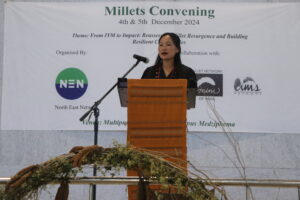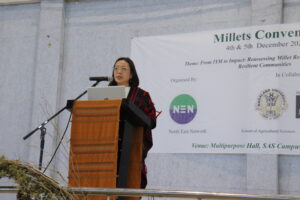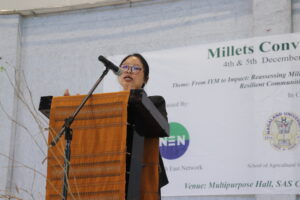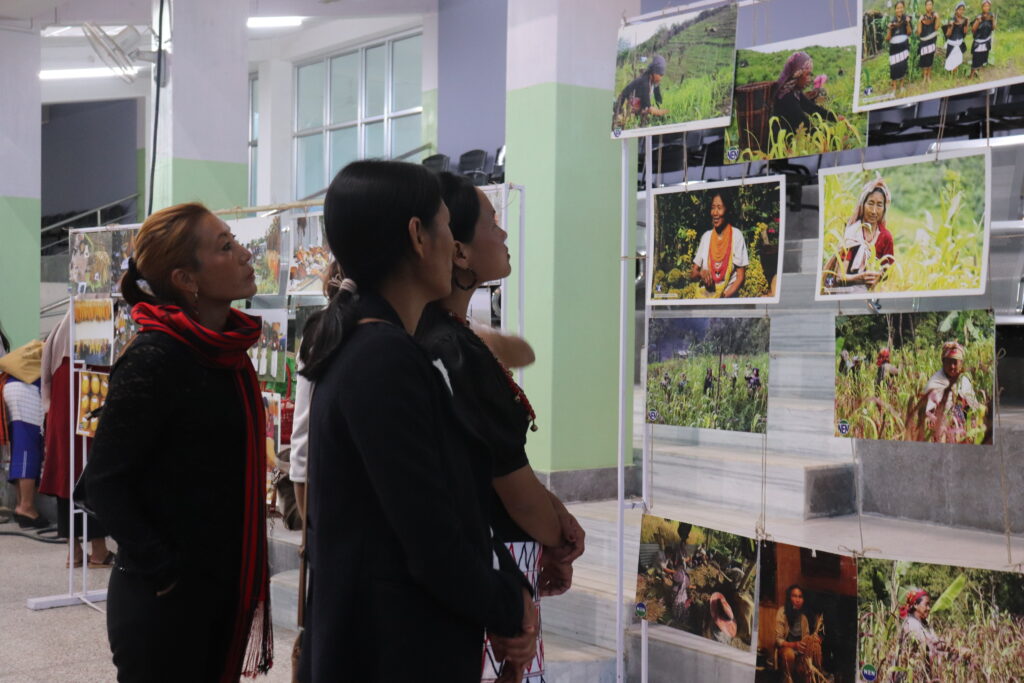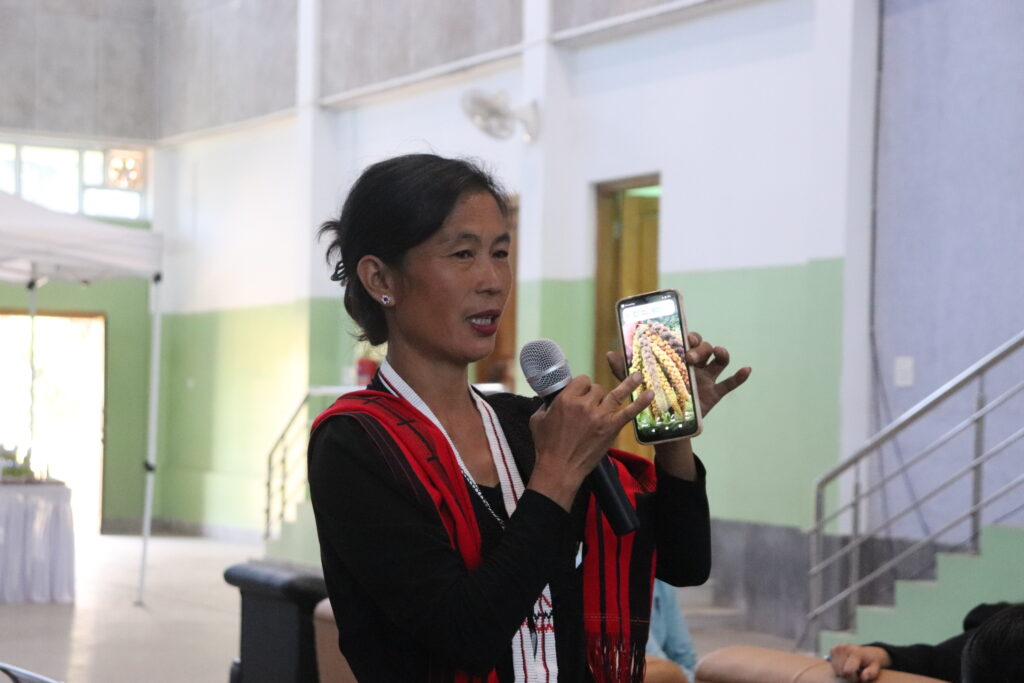Reassessing Millet Resurgence and Building Resilient Communities
Community-centric millet cultivations have enhanced food security and sustainable livelihoods, and strengthened climate resilience in many communities of Nagaland. To reassess the impact of the International Year of Millets (IYM) 2023 and explore strategies to build resilient millet-farming communities, a two-day convening was held on 4th and 5th December 2024 at the Multipurpose Hall, School of Agricultural Sciences (SAS) Campus, Nagaland University, Medziphema. Organized by North East Network (NEN) in collaboration with SAS, Millet Network of India (MINI), and the All India Millet Sisters’ (AIMS) Network, the event brought together 11 communities from 5 districts of Nagaland.
The first day of convening began with an invocation prayer and the inauguration of an exhibition showcasing millets and seeds from Chizami, Jakhama, Phor and Shamator. Millet recipes, a demonstration on millet de-huller, and a photo exhibition highlighting millet farming practices were also featured here. Farmers engaged in meaningful discussions, sharing knowledge about seed varieties during the exhibition.
In the welcome note, Professor T. Gohain, Head of the Department of Agronomy, SAS, emphasized the unparalleled knowledge of farmers regarding millets, surpassing even research findings.
“Millets are not just food, but our cultural identity”, said Wekoweu Tsuha, State Coordinator of NEN Nagaland. She highlighted the journey of millet revitalization in the region. She reflected on how the Green Revolution contributed to the decline in millet cultivation, resulting in seed loss in some areas and storage without cultivation in others. She stressed the cultural and nutritional significance of millets. Most importantly, Wekoweu posed critical questions about the impact of IYM on farmers and the need for a collective perspective from policymakers, scientists, and farming communities to promote sustainable millet farming.
Dr. Cressida Jamir, Deputy Director, Department of Agriculture, Nagaland, highlighted the wisdom of women farmers in millet cultivation. She noted that the increase in millet cultivation post-IYM was marginal, at only 130 hectares. Challenges such as limited market linkages were discussed. Jamir underscored the importance of organic millet production and collaboration among policymakers, researchers, NGOs, and millet-farming communities. She also shared about government initiatives for seed production and millet value addition, efforts to gain GI tags for foxtail and job’s tears, and initiatives to attract younger generations to millet farming.
Moderated by Vilazonuo, Project Lead, NEN, Voices from the Field focused on women-led millet initiatives. Speakers included women farmers from Chizami, Shamator, and Meluri, who shared their journeys of revitalizing millet cultivation. These women’s collectives, with NEN’s support, have significantly influenced their communities and village councils to revitalise millets. Engaging discussions followed about challenges, storage practices, and millet varieties.
The workshop, themed “Millets for Resilient Communities: Perspectives, Concerns, Innovative Strategies,” featured two speakers. Dr. Harendra Verma from ICAR elaborated on the resilience of millets as hardy crops requiring minimal resources. Dr. Waluniba from the Department of Entomology, SAS, provided insights into managing pests such as cutworms and white grubs using integrated pest management strategies.
The day concluded with a session on millet value addition, led by Angunuo Miari, a home-based worker and entrepreneur from SEWA Kohima. Demonstrations on millet-based recipes were complemented by discussions on innovative culinary uses of millets, fostering knowledge-sharing among participants.
The second day of the convening started with an exposure visit to the Millet Processing Unit at SAS Campus, where farmers were given a demonstration on the use of technical appliances to process millets.
In her speech on “Co-creating Resilient and Sustainable Food and Farming Systems”, Wekoweu Tsuha emphasised on maintaining crop diversity in millet fields, conserving resources such as land, water, soil, seeds and forests to sustain communities and the importance of women to hold decision making positions in this regard. She also highlighted the importance of collectivising with youth, men and the larger community, and to collaborate with government, researchers and social sector organisations to bring about change. An engaging group discussion followed, where farmers shared the challenges faced in millet cultivation, how these challenges affect the communities and what changes they want to see. Highlights of this activity were the need of proper roads to millet fields, engagement among younger generations in these initiatives, seed sovereignty, financial viability and the support of modern technology to make post-processing easier. The convening ended with the sharing of action plans by farming communities.
Overall, the Millets Convening provided a platform for diverse stakeholders to reassess the journey in revitalising millets and strategize a way forward. By combining traditional wisdom with modern practices and fostering collaborations among farmers, policymakers, researchers, and government organisations, the event emphasized the collective effort required to strengthen food security, cultural identity, and community resilience through millets, and the significant role of women farmers in this process.


